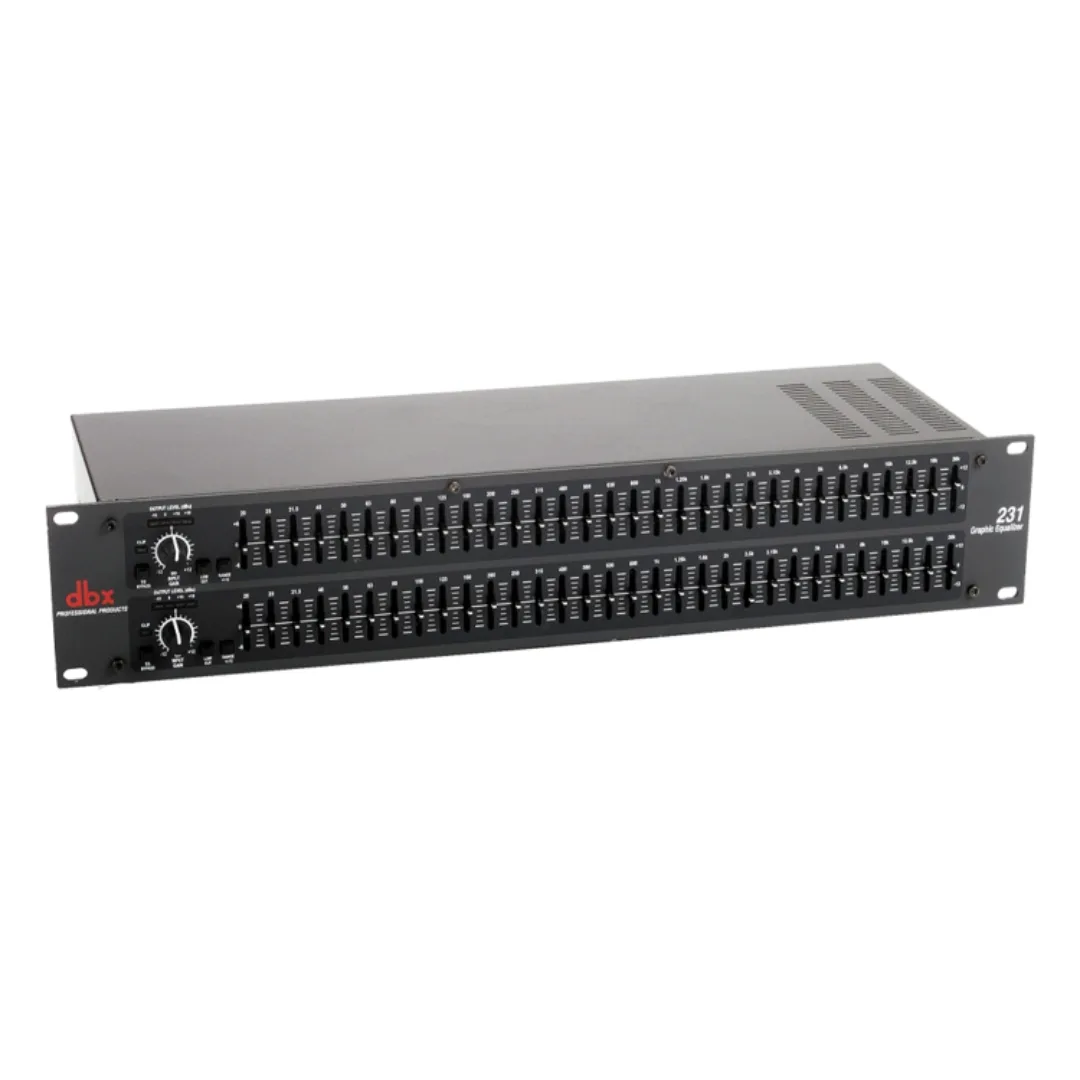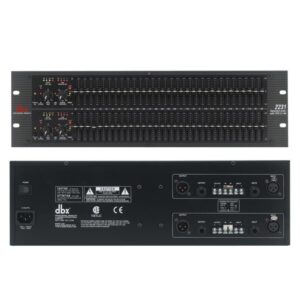The DBX 231 is a dual-channel, 31-band graphic equalizer. It’s a professional-grade audio processing tool widely used in live sound reinforcement, studio recording, and installed sound systems for precise tonal shaping and feedback control.
Here’s a breakdown of its features and specifications:
Key Features:
Dual-Channel Operation: The unit has two independent channels, each with its own set of controls, allowing for separate EQ adjustments for stereo signals or different sound sources.
31 Bands of Equalization: Each channel offers 31 frequency bands, spaced at 1/3-octave intervals across the audible spectrum (typically from 20Hz to 20kHz). This provides very detailed control over the sound.
Constant Q Technology: This feature ensures that the bandwidth of each filter remains consistent regardless of how much gain is applied (boost or cut). This leads to more predictable and precise sound shaping.
Switchable Boost/Cut Ranges: You can select between two ranges for the sliders:
±6 dB: For subtle, fine-tuning of frequencies.
±12 dB: For more significant adjustments, such as correcting room acoustics or feedback frequencies.
Low-Cut Filter: Each channel has a switchable 50Hz (or sometimes 40Hz, depending on the exact model variant, e.g., 231s) 12dB/octave high-pass filter. This is useful for removing unwanted low-frequency rumble, stage noise, or microphone handling noise without affecting the main audio signal.
Input Gain Control: Each channel has an input gain adjustment (typically ±12 dB) to match the equalizer’s level to the input signal level.
EQ Bypass Switch: A front-panel bypass switch allows you to instantly compare the equalized signal with the original unprocessed signal, making it easy to hear the effect of your EQ adjustments.
Output Level Metering: 4-segment LED ladders on each channel provide a visual indication of the output level, helping to prevent clipping and monitor signal strength.
Robust Connectivity: Features balanced XLR and 1/4″ TRS inputs and outputs, ensuring compatibility with professional audio equipment and providing clean, noise-free signal transmission.
Durable Construction: Housed in a rugged steel chassis with high-quality components, the DBX 231 series is built to withstand the demands of touring, studio use, and permanent installations.
Specifications (Commonly Cited for the DBX 231s model):
Number of Bands: 2 x 31 bands
Bandwidth: 1/3-octave Constant Q
Frequency Response: <10 Hz to >50 kHz, +0.5/-3 dB
Dynamic Range: Typically >112 dB
Signal-to-Noise Ratio (S/N): Typically >95 dB
Total Harmonic Distortion (THD+Noise): <0.003% Interchannel Crosstalk: <-90 dB Input Connectors: 1/4" TRS, female XLR (pin 2 hot) Input Type: Electronically balanced/unbalanced, RF filtered Input Impedance: Balanced 40 kΩ, Unbalanced 20 kΩ Max Input Level: >+21 dBu (balanced or unbalanced)
Output Connectors: 1/4″ TRS, male XLR (pin 2 hot)
Output Type: Impedance-balanced/unbalanced, RF filtered
Output Impedance: Balanced 100 Ω, Unbalanced 50 Ω
Max Output Level: >+21 dBu (balanced/unbalanced into 2 kΩ)
Low Cut Filter: 50 Hz (or 40Hz in some variants), 12 dB/octave
Input Gain Range: ±12 dB
Boost/Cut Range: ±6 dB or ±12 dB (switchable)
Power Requirements: 100-240 VAC, 50/60 Hz
Dimensions: 19″ W x 3.5″ H x 6″ D (483 x 89 x 152 mm) – typically 2U rack space
Weight: Approx. 6.2 lbs (2.81 kg)
Applications:
Live Sound: Tuning P.A. systems, controlling feedback, shaping the overall tonal balance of a live mix.
Studio Recording: Corrective EQ on individual tracks (vocals, instruments), shaping the tonal characteristics of a mix.
Installed Sound: Adjusting acoustics in venues like theaters, churches, or conference rooms.
DJing: Enhancing music for different environments or crowd preferences.
The DBX 231 is a workhorse equalizer, appreciated for its reliability, straightforward operation, and professional performance at an accessible price point


Reviews
There are no reviews yet.